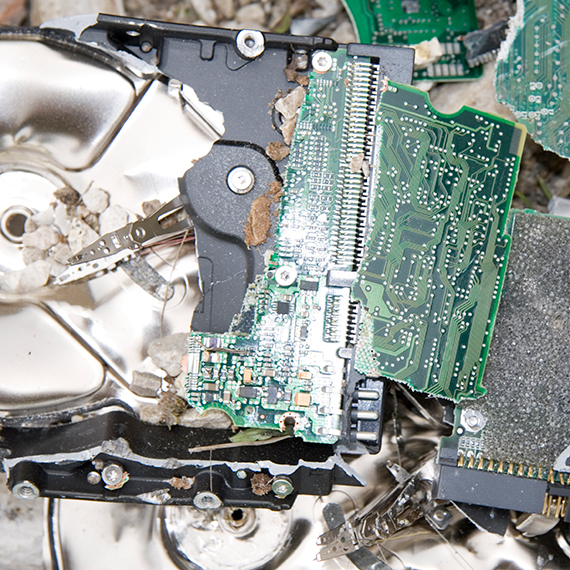
In today’s modern world, most businesses utilize electronic or digital storage for information. However, a hard drive erasure isn’t sufficient to protect your data. A-1 Shredding securely and responsibly destroys electronic media, including hard drives and SSD cards. Secure disposal of these items is essential to ensure that your data cannot be recovered. Our professional electronic destruction services guarantee that your electronic media will be completely unusable and your information will be permanently erased.
We also provide a mobile collection service for your convenience.
Why You Need Electronic Media Destruction
A standard file deletion or disk wipe is, unfortunately, not nearly sufficient to protect the data contained on the device. Even a factory reset or complete formatting of the device isn’t enough to keep the data from someone who is determined to retrieve it.
In 2019, 7.9 billion records were exposed through data breaches. If you discard an external hard drive, or any device containing a hard drive, without properly destroying the data first, you run the risk of having your information stolen.
Digital Data Protection: Hard Drive Destruction
A-1 Shredding’s hard drive destruction service works according to the same principles and security standards as our regular shredding service. One of our registered technicians will drive to your location and collect the electronic items you’ve designated for shredding. The items will be thoroughly crushed and destroyed, making the information they contain impossible to retrieve. At the end of the appointment, as with all our shredding programs, you’ll receive a Certificate of Destruction, providing you with a precise record of what was destroyed.
What is Hard Drive Shredding?
Devices that use or contain a hard drive, like a smartphone or a computer, store their information on the hard drive. When information is written onto the drive platter, an electronic imprint of it remains, even if the information is deleted from the device. To prevent information from being retrieved after the hard drive is retired, hard drive shredding (also referred to as hard drive destruction) is used to physically crush and destroy components like the drive platter. This prevents the device from being read again, which means that, no matter how skilled a hacker might be, they won’t be able to access any of the data the hard drive once held.
How Do We Make Sure Electronic Storage is Destroyed?
E-media destruction works by physically destroying the electrical components. In the case of hard drives, crushing both the memory disk and the drive platter makes certain that the information can no longer be read or reconstructed. The same principle holds true for CDs, diskettes, and flash drives. While smaller e-media, like CDs and floppy disks, can be shredded, larger and more robust devices may require physical crushing with a specialized machine.
A-1 Shredding provides secure destruction of various forms of electronic media.
- CD / DVD
- Diskettes
- Super Disks
- LTO / Ultrium
- 3480 / 3490/ 3580/ 3570/ 9840/ 9940 Tapes
- SLR / MLR / DLT
- Round Reel Tapes
- Magnus
- Travan
- Hard Drives
- Flash Drives
- Optical Platters
- VHS/Beta Tapes

My Item Isn’t Listed! Can I Still Shred It?
If you have a digital storage device and you’re not sure whether or not it can be shredded, the easiest way to find out is to give us a call! Our team will be able to tell you if we accept the item or not, and if we do, they’ll help you determine a convenient time for the shredding.
Watch how we destroy electronic media ►
Confidential & Eco-Friendly
Our dedication to recycling is a cornerstone of our business, and we don’t stop at paper products. Recycling electronics is just as important. Only 12.5% of e-waste is currently recycled, and we want to change that.
After we crush or shred your old electronics, the pieces are carefully sorted out into different material categories, such as different types of metal. The pieces are separated and then sent for further processing, which involves the stripping of precious metals and reusable components. These raw materials are then recycled back into the production process.
It’s cheaper and safer to retrieve materials from recycled electronics than it is to mine and produce them from scratch, so we recycle every particle we possibly can.

